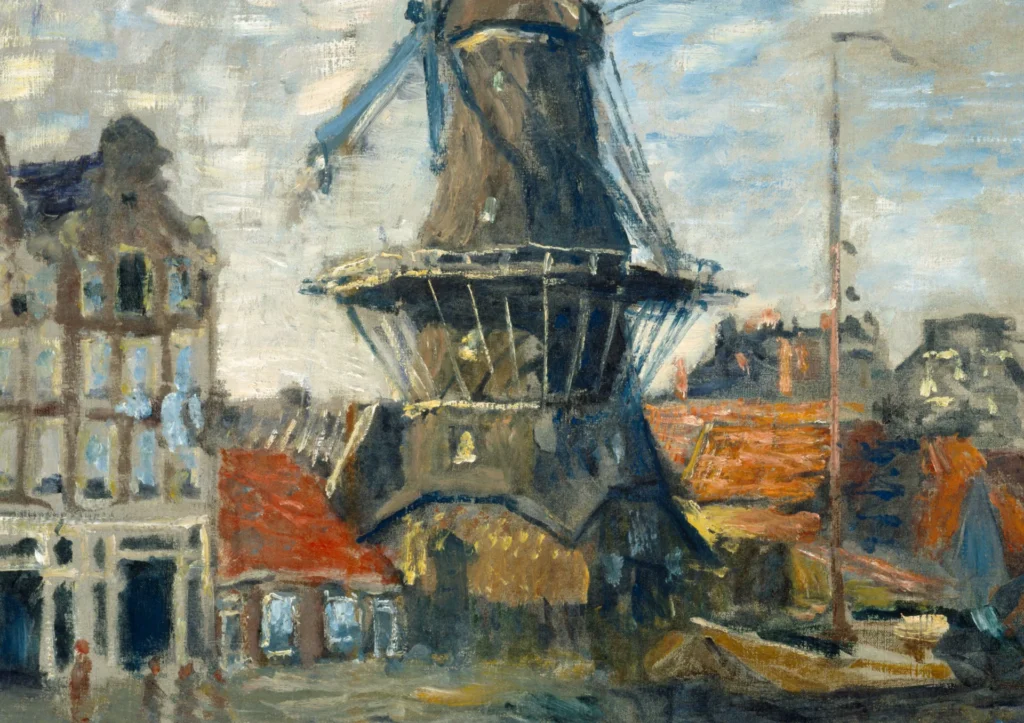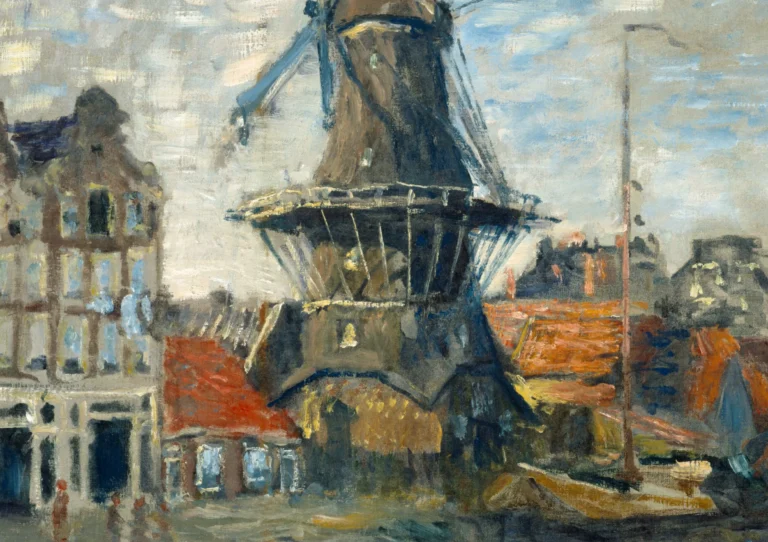Canal in Amsterdam (1874)
Created in 1874, 'Canal in Amsterdam' is a superb representation of Impressionism by Claude Monet. This painting captures a lively urban scene by the canal, showcasing the daily interactions of passersby against a backdrop of vibrant colors. Monet's technique, characterized by his distinctive small brushstrokes and the harmonious treatment of water and sky, encapsulates the vitality of the city, reflecting the social dynamics of Amsterdam in the 19th century.
Year 1874
About the Artwork
'Canal in Amsterdam' was painted during a period when Monet and his contemporaries were exploring the effects of light and atmosphere on landscapes. Monet visited Amsterdam, fascinated by its unique waterways and the vibrant life surrounding them. The painting reflects not only Monet's interest in capturing the essence of a moment through light and color but also showcases the influence of urban life on Impressionist artists. This work provides insight into the daily routines of the time and highlights Monet's innovative approach to portraying scenes in a way that breaks free from traditional artistic conventions.
Did You Know
Monet visited Amsterdam in 1874, where he was inspired by the city’s picturesque canals and lively atmosphere, leading him to create this phenomenal piece.
In ‘Canal in Amsterdam,’ Monet utilizes his signature impressionist technique, with loose brushwork and a focus on capturing light, which lets the viewer feel the shimmering water and vibrant life.
‘Canal in Amsterdam’ serves as a vivid historical document, reflecting the social dynamics of 19th century Dutch life and demonstrating the fascination with urban landscapes during this artistic era.










